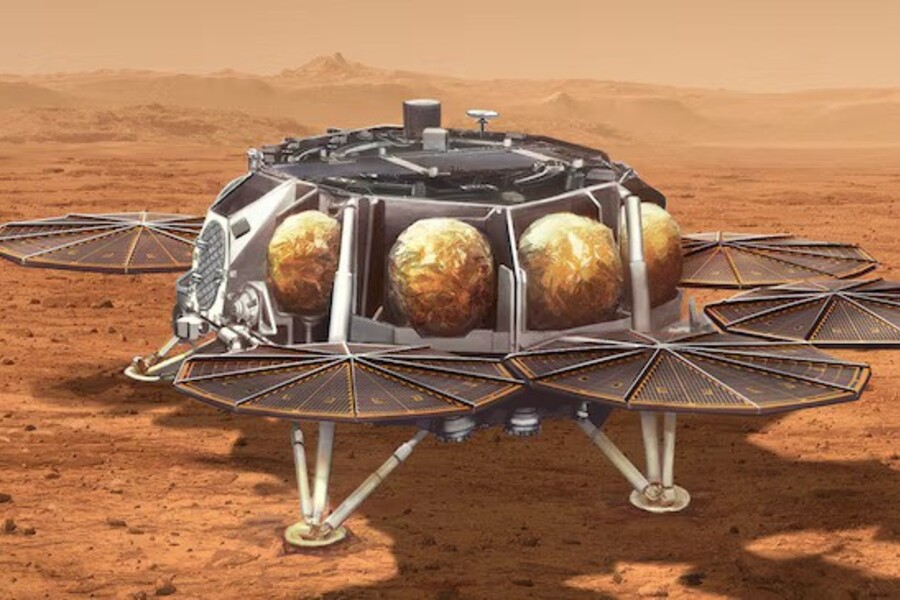NASA is taking significant steps toward retrieving Martian samples with a more cost-effective and efficient approach. The agency announced on Tuesday that it is considering two innovative options to move forward with the Mars Sample Return mission, a joint initiative with the European Space Agency (ESA).
The mission’s goal is to collect and return samples of rock, gas, and surface material gathered by NASA’s Perseverance rover. These samples are expected to provide groundbreaking insights into Mars’ geological history, climate evolution, and potential for life.
Originally, the Mars Sample Return mission faced financial and logistical hurdles. Independent reviews last year estimated the project could cost between $8 billion and $11 billion, with samples not arriving on Earth until 2040. NASA Administrator Bill Nelson called this timeline and cost “unacceptable.”
To address these concerns, NASA has introduced two alternative landing methods:
- Sky Crane Method: This approach involves a heat shield and parachute for descent, followed by retrorockets to lower the vehicle to Mars’ surface. It’s the same method successfully used for the Perseverance and Curiosity rovers.
- Commercial Heavy-Lift Vehicle: This option would involve working with commercial partners, such as SpaceX or Blue Origin, to deploy a mass delivery system for the mission.
Both options aim to simplify the mission, reduce costs, and shorten timelines. The sky crane method is estimated to cost between $6.6 billion and $7.7 billion, while the commercial heavy-lift vehicle option could cost $5.8 billion to $7.1 billion. Depending on the method selected, samples could arrive on Earth as early as 2029 or as late as 2035.
“Either of these two options creates a much more simplified, faster, and less expensive version than the original plan,” Nelson said during the announcement. NASA plans to finalize its decision in 2026.
Perseverance, which landed on Mars in February 2021, has been diligently collecting samples in sealed titanium tubes. By the time the mission concludes, it is expected to have gathered 30 samples. These materials will then be transported to Earth using an intricate multi-step process:
- A Sample Retrieval Lander, equipped with a rocket and two helicopters, will launch to Mars.
- Perseverance will deliver the samples to the lander, where they will be secured onto the rocket.
- The rocket will launch from Mars’ surface—the first rocket ever to do so—and rendezvous with an Earth Return Orbiter provided by ESA.
- The orbiter will capture the capsule containing the samples, exit Mars’ orbit, and deliver the payload to Earth.
A key change in the revised mission is the decision to clean Martian dust from the sample tubes directly on the planet’s surface using Perseverance’s spare arm. This simplifies the mission by eliminating the need for cleaning mechanisms on the return vehicle.
In the event Perseverance encounters issues transporting the samples, the mission’s helicopters will serve as backups. These helicopters can retrieve sample tubes that the rover might be unable to deliver.
The samples collected by Perseverance hold immense scientific value. NASA believes they could provide definitive answers about Mars’ potential for harboring life and serve as a foundation for future exploration. These materials may also be studied by future generations using advanced techniques yet to be developed.
“These samples will help us answer fundamental questions about Mars, and they hold the promise of transforming our understanding of the planet,” Nelson emphasized.
NASA and ESA are continuing to refine their plans as they move closer to this historic mission. The final decision on the approach will shape how the Mars Sample Return unfolds, paving the way for one of the most ambitious interplanetary missions in human history.
As scientists and engineers work to bring Mars closer to Earth, the countdown begins for a mission that could redefine humanity’s understanding of our neighboring planet.

